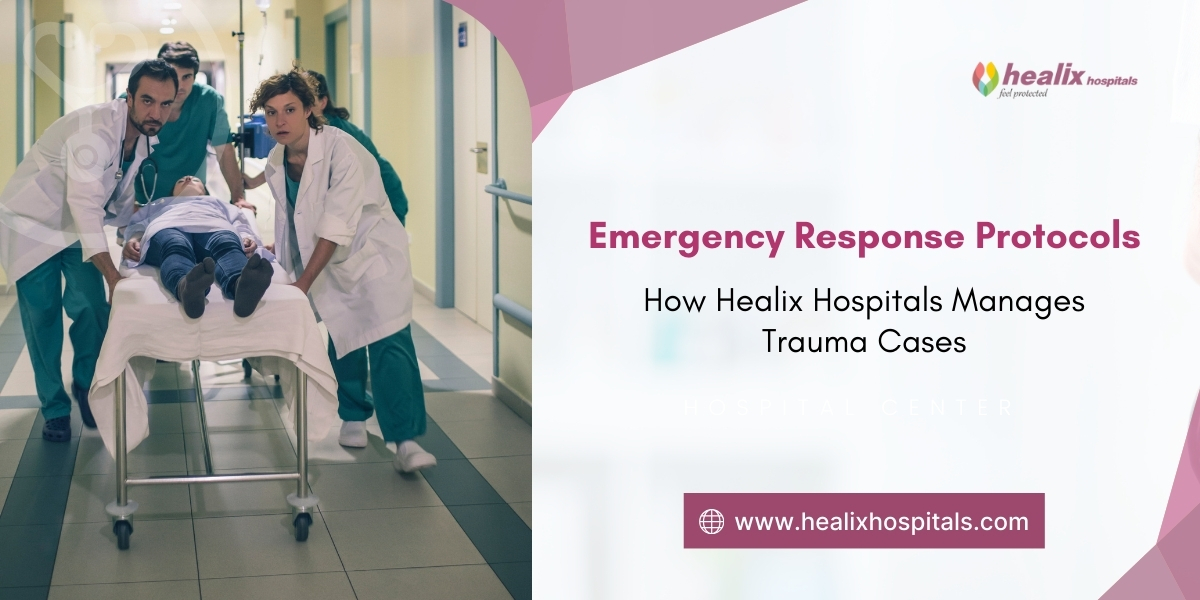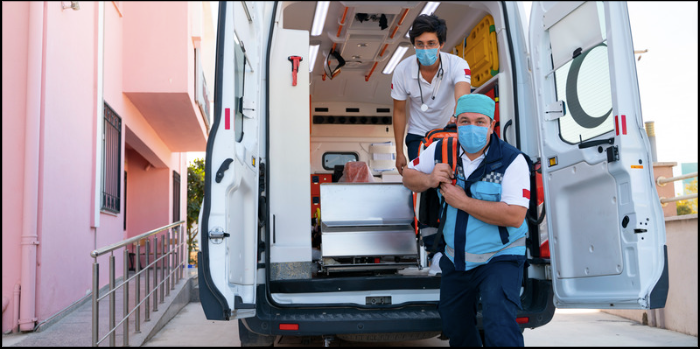Emergency Response Protocols: How Healix Hospitals Manages Trauma Cases

In the critical moments following a traumatic injury, the speed and efficiency of medical intervention can make the difference between life and death. At Healix Hospitals, we pride ourselves on our robust Emergency Response Protocols designed to provide swift, effective care to trauma patients. Our meticulously crafted protocols encompass every aspect of trauma management, from the initial emergency call to comprehensive post-trauma care. This holistic approach ensures that patients receive the highest standard of care when they need it most.
Understanding Emergency Response Protocols
Emergency Response Protocols are a set of standardized procedures and actions taken by medical professionals to manage emergency situations. These protocols are essential for trauma case handling, ensuring that every patient receives timely and appropriate care. At Healix Hospitals, our emergency medical protocols are continuously refined to incorporate the latest advancements in medical science and best practices in emergency healthcare services.
The Importance of Rapid Response in Trauma Management
Time is a critical factor in trauma management. The faster a patient receives immediate medical intervention, the better their chances of survival and recovery. Our rapid response strategies are designed to minimize the time between the occurrence of trauma and the delivery of definitive care. This involves a coordinated effort between emergency medical services, our emergency trauma team, and the hospital's emergency department procedures.

Key Components of Emergency Response Protocols at Healix Hospitals
1. Immediate Medical Intervention
The first step in our Emergency Response Protocols is to ensure that patients receive immediate medical intervention. This begins with the emergency call, where trained dispatchers provide critical instructions to bystanders and coordinate the arrival of emergency medical services. Our EMS teams are equipped with advanced life-saving equipment and trained in critical care procedures to stabilize patients en route to the hospital.
2. Trauma Care Protocols
Upon arrival at Healix Hospitals, patients are quickly assessed and triaged according to our trauma care protocols. This involves a rapid evaluation of the patient’s condition to determine the severity of their injuries and the appropriate course of action. Our emergency trauma team is ready 24/7 to provide life-saving protocols and initiate necessary interventions immediately.
3. Emergency Department Procedures
Our emergency department procedures are designed to facilitate efficient trauma patient management. This includes:
- Rapid Triage: A swift assessment process to prioritize patients based on the urgency of their conditions.
- Advanced Diagnostics: Immediate access to diagnostic tools such as CT scans, X-rays, and ultrasound to accurately diagnose injuries.
- Specialized Care Teams: Availability of specialized care teams, including surgeons, orthopedic specialists, and neurosurgeons, to provide targeted treatment.
4. Crisis Response and Management
Crisis response is a vital component of our Emergency Response Protocols. In situations involving multiple casualties or complex trauma cases, our protocols ensure a structured and coordinated response. This includes:
- Mass Casualty Protocols: Procedures to manage large-scale emergencies effectively.
- Crisis Management Teams: Dedicated teams trained to handle high-pressure scenarios and ensure that resources are allocated efficiently.
- Communication Systems: Robust communication systems to coordinate between different departments and external emergency services.
Trauma Patient Management and Recovery
Effective trauma patient management extends beyond the initial emergency response. At Healix Hospitals, we follow a comprehensive approach to ensure the best possible outcomes for our patients.
1. Post-Trauma Care
After the initial stabilization, patients are transferred to appropriate care units for further treatment. This may include:
- Intensive Care Units (ICU): For patients requiring continuous monitoring and advanced medical care.
- Surgical Units: For patients needing immediate surgical intervention.
- Rehabilitation Services: To support long-term recovery and rehabilitation.
2. Patient and Family Support
We recognize the importance of providing emotional and psychological support to both patients and their families. Our support services include:
- Counseling Services: To help patients and families cope with the trauma and its aftermath.
- Patient Education: Information on the patient’s condition, treatment plan, and recovery process.
- Family Liaison Services: Dedicated staff to keep families informed and involved in the patient’s care.

Training and Continuous Improvement
At Healix Hospitals, we believe that maintaining high standards in Emergency Response Protocols requires ongoing training and improvement. Our staff undergoes regular training sessions to stay updated on the latest emergency medical protocols and trauma care protocols. We also conduct regular drills and simulations to ensure readiness for any emergency situation.
1. Continuous Education
Our medical professionals participate in continuous education programs to enhance their skills and knowledge. This includes:
- Advanced Trauma Life Support (ATLS): Training in advanced techniques for the management of severe trauma.
- Emergency Nursing Certification: Specialized training for nurses in emergency care procedures.
- Simulation-Based Training: Using simulated scenarios to practice and refine emergency response skills.
2. Research and Development
Healix Hospitals is committed to advancing the field of trauma management through research and development. Our initiatives include:
- Clinical Research: Conducting research studies to improve emergency care practices.
- Innovation in Emergency Care: Developing and implementing new technologies and techniques to enhance patient outcomes.
- Collaboration with Medical Institutions: Partnering with leading medical institutions to share knowledge and best practices.

The Role of Technology in Emergency Response
Technology plays a crucial role in enhancing the effectiveness of our Emergency Response Protocols. At Healix Hospitals, we leverage the latest technological advancements to improve trauma patient management and outcomes.



Comments